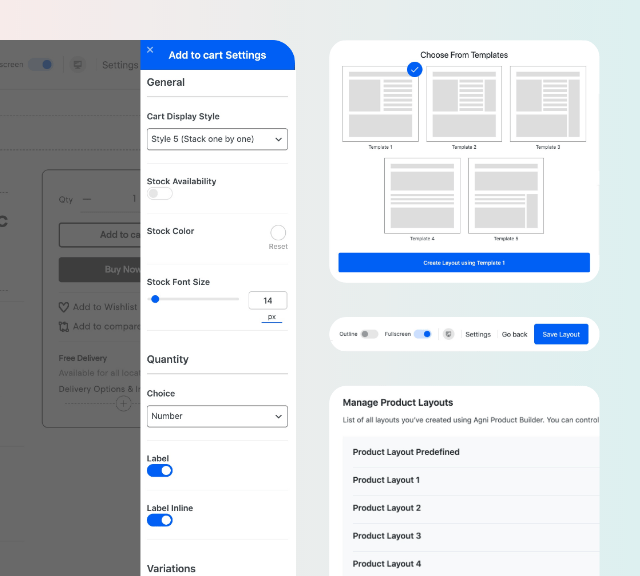We can use that information to optimize the software to precisely meet our goals. Embedded systems always function as part of a complete device — that’s what’s meant by the term embedded. They are low-cost, low-power-consuming, small computers that are embedded in other mechanical or electrical systems.

Embedded systems provide the computing power required for these kiosks to offer customers an interactive experience. For instance, these systems allow machines to automatically identify and remove defects from production before the human eye can see them. Factory robots with embedded systems have many applications, including assembly and quality assurance. Plant automation robots would have to rely on external computing and control systems without these embedded systems.
Embedded System Development Components
Security in embedded systems is paramount as these systems are increasingly interconnected, controlling critical operations in industries like healthcare, automotive, and IoT. Protecting these systems from cyber threats and vulnerabilities is crucial to ensure data privacy, user safety, and overall system reliability. Its architecture refers to the high-level structure and design principles that govern the organization and interaction of software components within an embedded system. It plays a crucial role in ensuring the system’s functionality, performance, maintainability, and scalability. It is defined as a computer software which is design to control machines / devices which are required to perform any operation.
- Firmware is software that is written in non-volatile storage inside an embedded system and cannot be changed or deleted.
- Software as per identified by IATF which is mandatory to comply by organization who is sole responsible for developing an product which his being operated or controlled by software.
- It is responsible for scanning the code, removing bugs and other errors, and highlighting the specific instances where they occurred.
- There are some important platform and architecture concepts that are introduced in the build system to help enforce good software design techniques.
The agile development model can be the answer to most of these problems. The effectiveness of an embedded system is affected by design scalability and other efficiency metrics. This is the system’s brain and the most crucial element to its efficiency. Given the project at hand, processors and controllers come in a wide range of forms. Electric vehicle charging stations supply electric power to recharge the batteries of connected electric vehicles. Embedded systems are used in charging stations to provide computing power for graphics displays, automatically highlight technical issues, and alert technicians about upcoming maintenance requirements, among other functions.
Embedded Hardware and Operating Systems
Motor controls and power distribution systems use high-power resistors to dissipate more heat. RAM is also known as the ‘data memory’ and is volatile, which means that it stores information only temporarily and is wiped clean when the power supply is turned off. On the other hand, ROM is also known as the ‘code memory’ and is responsible for storing the program code. It is non-volatile, storing system information even when the power supply is turned off. Depending on the complexity and use of the device, the software layer might include a variety of components. Charles Stark Draper developed an integrated circuit in 1961 to reduce the size and weight of the Apollo Guidance Computer, the digital system installed on the Apollo Command Module and Lunar Module.

The average base salary for an embedded systems engineer in the US is $128,603 per year, according to Glassdoor. Embedded systems engineers also report an additional average annual pay of $41,323. These figures combined equal a total estimated yearly compensation in the US of $169,927 [2]. In the automotive sector, AUTOSAR is a standard architecture for embedded software. An early mass-produced embedded system was the Autonetics D-17 guidance computer for the Minuteman missile, released in 1961.
Types of embedded OSes
They may be small in size but are swift in processing speed, purpose-built, and hardy. Embedded systems are also becoming increasingly powerful and sophisticated, thus enhancing their applicability in edge computing, IoT, graphics rendering, and other functions. While many embedded operating systems are suitable for various devices, the choice of OS for an embedded system can be considerably influenced by the hardware layout and personal preferences of the programmer. Two typical ways to categorize embedded operating systems are whether they run on microprocessors or microcontrollers and whether software engineers use them, especially for certain industries or devices. Microprocessors and microcontrollers are built into these embedded devices to aid in the performance of a single function or set of related functions.
This method brings the system close to a multitasking kernel with discrete processes. Telecommunications systems employ numerous embedded systems from telephone switches for the network to cell phones at the end user. Computer networking uses dedicated routers and network bridges to route data. Communications protocols designed for use in embedded systems are available as closed source from companies including InterNiche Technologies and CMX Systems.
Product Architecture
This software product engineering is responsible for creating apps that can handle the complex web of interconnected devices. The demand for these engineers will only grow as technology continues to develop. Embedded software is a type of software that is programmed embedded system definition into hardware devices. For example, GPS devices, robots, calculators and smartwatches use embedded software. The integration of software engineering with these devices allows them to develop systems comprised of programming tools and operating systems.

During a device’s early design phases, the hardware that will make up the embedded system – and its configuration within the device – is decided. Then, embedded software is developed from scratch to run exclusively on that hardware in that precise configuration. This makes embedded software design a very specialized field that requires deep knowledge of hardware capabilities and computer programming. Unlike standard computers that generally use an operating systems such as macOS, Windows or Linux, embedded software may use no operating system. When they do use one, a wide variety of operating systems can be chosen from, typically a real-time operating system. The hardware components of embedded systems encompass various physical elements that comprise the system infrastructure.
What is embedded software?
Finding and correcting software bugs requires a range of debugging strategies. There are various debugging strategies, such as stepping through code, creating breakpoints, and inspecting variables. Once you have the answer, you may go on to the next step, which is gathering the necessary hardware and software for your system. Listen to comments and discuss these needs with the rest of the team and any interested parties.
The expected growth is partially due to the continued investment in artificial intelligence (AI), mobile computing and the need for chips designed for high-level processing. Miniature wireless devices called motes are networked wireless sensors. These motes are completely self-contained and will typically run off a battery source for years before the batteries need to be changed or charged.
What is embedded software development?
Explore the role of embedded systems and embedded systems engineers with the following article. A microkernel allocates memory and switches the CPU to different threads of execution. User-mode processes implement major functions such as file systems, network interfaces, etc. For high-volume systems such as mobile phones, minimizing cost is usually the primary design consideration. Engineers typically select hardware that is just good enough to implement the necessary functions.
The software solution is more flexible in that it can be adapted to new coins or new currencies. Embedded software must be designed to meet real-time performance, energy, and size constraints. We can leverage techniques ranging from new, abstract programming languages to back-end compiler algorithms to attain these goals. Embedded software tools tend to be designed differently than general-purpose compilers. A compiler for arbitrary code is designed to give reasonably good results on a wide variety of programs. When we design embedded software, in contrast, we have specific targets in mind for performance, energy, and so on.
Factories today use robots in several processes that require high-precision tasks, operating in dangerous work conditions, or both. Typical automated jobs require robots to be fitted with sensors, actuators, and software that allow them to ‘perceive’ the environment and derive the required output efficiently and safely. Robots are equipped with embedded systems that link them to various subsystems to achieve this goal. The assembler is for instances where assembly language is the programming language used to build the application.








































